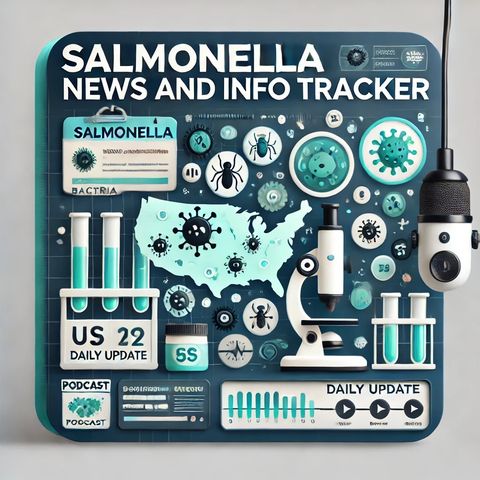Salmonella Newport Outbreak Traced Across Canadian-US Border: Lessons in Transnational Food Safety Collaboration

Download and listen anywhere
Download your favorite episodes and enjoy them, wherever you are! Sign up or log in now to access offline listening.
Salmonella Newport Outbreak Traced Across Canadian-US Border: Lessons in Transnational Food Safety Collaboration
This is an automatically generated transcript. Please note that complete accuracy is not guaranteed.
Description
A newly released report has shed light on a Salmonella outbreak that occurred in Canada four years ago, drawing connections and insights from a simultaneous investigation in the United States....
show moreSalmonella Newport, one of many strains of the Salmonella bacteria, is known for causing gastrointestinal illness in humans. Symptoms typically include diarrhea, fever, and abdominal cramps, appearing 6 hours to 6 days after infection and lasting 4 to 7 days. While most people recover without treatment, severe cases can occur, sometimes requiring hospitalization.
In Canada, the outbreak prompted a rigorous investigation by public health officials. The researchers sought to identify the source of the Salmonella to mitigate the spread and prevent future incidents. Preliminary analyses suggested a link to contaminated produce, a common vehicle for such infections.
Meanwhile, in the United States, investigators were embroiled in a parallel search for the outbreak's origin. Their findings were instrumental in understanding the larger geographic scope of the problem. Using advanced epidemiological methods and genetic sequencing, they traced the outbreak's origins, providing crucial data that informed both countries' public health responses.
The investigation revealed that the Salmonella Newport infections in 2020 were associated with cross-border produce shipments. This finding was vital as it highlighted the complexity of food supply chains and the need for robust international cooperation to manage food safety risks effectively.
Researchers emphasized the role of genetic sequencing technologies that allowed them to match bacterial samples from patients to potential sources. This advancement in technology represents a significant leap forward in epidemiology, providing a clearer path from infection to outbreak source identification.
The joint efforts of Canadian and U.S. officials underscore the importance of collaborative international public health systems, especially in managing transnational food safety threats. As trade and food imports grow, the ability to rapidly identify and contain foodborne pathogens has never been more critical.
In the aftermath of the outbreak, both countries have taken steps to enhance surveillance systems and improve the traceability of risky food items. Public health agencies continue to educate producers, suppliers, and consumers about food safety practices to prevent future outbreaks.
Furthermore, the incident has prompted a review of regulations and standards governing agricultural imports. Ensuring these are stringent enough to protect public health while facilitating trade remains a complex but necessary balancing act. This outbreak serves as a reminder of the interconnectedness of modern food networks and the ongoing challenges in securing food safety.
The report not only offers transparency regarding the events of 2020 but also provides valuable lessons for future outbreak management. By leveraging technology and fostering international partnerships, health officials aim to enhance the global food safety landscape, safeguarding public health and maintaining public trust in food systems.
Information
| Author | QP-4 |
| Organization | William Corbin |
| Website | - |
| Tags |
Copyright 2024 - Spreaker Inc. an iHeartMedia Company
